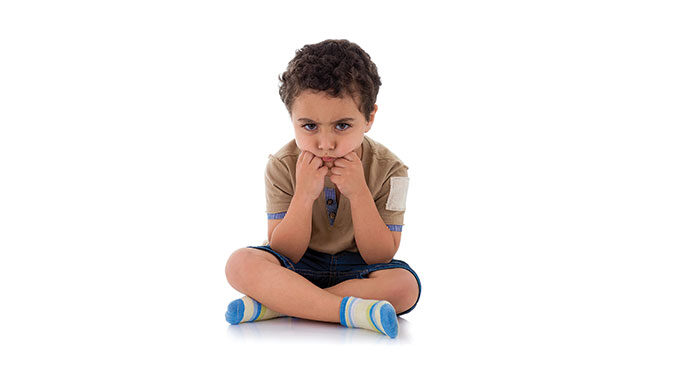
Tips and tricks to avert meltdowns
Published: October 27, 2022
By: Malia Jacobson
Clenched fists, flushed cheeks, and shaky, shallow breaths — most parents can spot these signs of an impending kid meltdown. When we notice our kids about to lose it, we have a few options: we can intervene in hopes of mitigating the damage, we can whisk our child home (or at least out of the public gaze) before the tantrum strikes or we can simply hunker down and wait out the storm. But what if we could avoid a meltdown in the first place? Turns out, we can, at least some of the time. Researchers say mindfulness, that wellness keyword of the moment, can help keep kids calm, centered and far from meltdown town. By building a child’s awareness of swirling emotions and strengthening the mind-body connection, mindfulness exercises are proven to reduce stress and anxiety and reduce self-harm in kids of all ages.
In their new book The Yes Brain: How to Cultivate Courage, Curiosity, and Resilience In Your Child, authors Daniel J. Seigel, M.D. and Tina Payne Bryson, Ph.D. describe kids’ emotional “zones” as the enraged, about-to-melt down “red zone,” the calm, connected “green zone,” and the withdrawn, overstimulated “blue zone.” Using simple mindfulness activities, parents can help kids stay in the calm “green zone,” where they’re more likely to make better choices and maintain emotional and behavioral regulation.
Of course, a solid mindfulness practice involves consistent repetition and routine, not quick fixes. But for particularly heated moments, it doesn’t hurt to have a few mindfulness exercises on deck to help kids de-escalate when they can’t do it themselves. After all, kids don’t want to lose control any more than we do. And when a meltdown looms, sometimes you’ve got to pull something out of thin air.
That’s where these easy-to-implement tools and techniques win the day. They’re simple, free, and dial down anxiety in mere moments.
Time-In. Before kids freak out, try a “time-In:” When steamed-up kids need to cool down, a “time-in” offers a chance to regroup and build vital skills that they might miss in a solitary “time out.”
Fidget toy meditation. You might have one of these mindfulness tools, such as a fidget spinner or Pop It, nearby. The next time your child is upset, ask them to give it a good spin or pop while practicing deep, rhythmic full-belly breaths.
Breathwork. To encourage deep, slow breathing to induce tranquility, try these breathing exercises: Try “birthday candle breaths:” have kids pretend each outstretched finger is a birthday candle, then take a deep breath to blow each “candle” out; “starfish breaths:” tracing a finger along the outline of the opposite hand in the form of a starfish, taking a deep breath up and down each finger; or “rocket breaths:” pressing hands together over their heart, have them take a deep breath to “blast” the rocket overhead.
Green Zone. When kids are seeing red, help steer them back into their “green zone” by placing one hand on their chest and one hand on their stomach, then simply breathing. Kids can practice this calming technique before bed when they’re getting relaxed and sleepy. Each time the exercise is repeated, its calming effect is reinforced (this goes for calming breath exercises in general – practice makes perfect).
Mindfulness apps. For wired parents, tweens and teens, mindfulness apps like Headspace and Buddhify offer quick meditations to help kids shift out of a negative or angry state; parents can guide younger kids through these meditations, too.
Peace out, meltdowns.
Malia Jacobson is a nationally published health journalist and mom who encourages healthy lifestyles for the body and mind.
